
By Leah S. Dunaief
Would you like to be different? Would you like to change your personality? Perhaps you would like to be more extroverted. Or more open to new experiences. Or even just more organized. Well, thanks to the pandemic, here is your chance.
People can and do successfully change their personalities even as adults. Now we are about to emerge from the isolation of lockdown and quarantine and rejoin the larger world. The stage is set for a new you. But this transformation will take work. To start, one could embrace the “As If Principle,” proposed by Richard Wiseman, a psychology professor at the University of Hertfordshire in England. This would require one to behave as if one were already that different person, and after a time, the new behavior and the person would sync. Famously, that is the story the debonair Cary Grant told of his early life, which started on the Bristol docks as Archie Leach and wound up at the pinnacle in Hollywood. “I pretended to be somebody I wanted to be until finally I became that person. Or he became me,” Grant said, according to the British newspaper, The Guardian.
An article in the April 11 issue of The New York Times took up this subject. Headlined, “You Can Be a New You After the Pandemic,” written by Olga Khazan, the story states the following. “Researchers have found that adults can change the five traits that make up personality — extroversion, openness to experience, emotional stability, agreeableness and conscientiousness — within just a few months.”
Another psychology professor, this one at Columbia University, asserts a similar theme. Geraldine Downey, who studies social rejection, has found that “socially excluded people who want to become part of a group are better off if they assume that other people will like them. They should behave as if they are the popular kid. Getting into social interactions expecting the worst, as many socially anxious people do, tends to be a self-fulfilling prophecy.” In another example of change, “people were able to become more extroverted or conscientious in four months just by listing the ways they’d like to change and what steps they would take to get there,” according to the NYT article. If one wants to be more outgoing, one can make a list of upcoming events in which to interact or persons to call for lunches, and after enough such efforts, the act becomes natural.
It can help in this transformation to see a therapist, research recommends. One such example described a person with neuroticism, “a trait responsible for anxiety and rumination.” After a short burst of therapy, in which the “warm, comforting presence” of a therapist encouraged the idea that the client is a valued person, neuroticism receded, and the studies showed the effect lasted for at least a year.
But not everyone can afford a therapist. Mirjam Stieger, a postdoctoral researcher at Brandeis University, and her colleagues developed an app that “reminded people to perform small tasks to help tweak their personalities, like “talk to a stranger when you go grocery shopping,” to prompt extroversion. The app then asks them if they had done that. According to the study, after three months, the change had stuck.
Agreeableness, by the way, involves “greater empathy and concern for others.” And so, being agreeable after this pandemic could mean being gentler toward one another. We now know, for example, how much essential workers sacrificed during the pandemic, many even their lives. That would suggest greater kindness and patience toward someone who, during the pre-pandemic, might just have been dismissed as annoying. We don’t know what exactly has been that person’s recent experience. At least that can be a conscious thought to modify behavior in what otherwise might have been a contentious situation.
For those who wish to change or live differently, as the NYT article says, “your personality is more like a sand dune than a stone.”








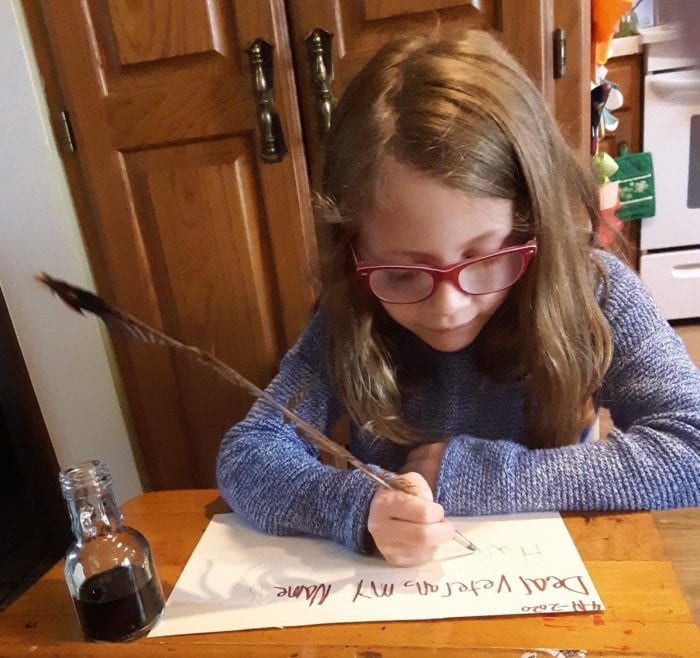
 In conjunction with the Museum’s At Home With LIM projects, a series of online family art and history activities based on the museum’s collection, historic buildings and grounds, the Student/Veteran Pen Pal Project takes young people on a journey through the art and history of penmanship in the 19th century.
In conjunction with the Museum’s At Home With LIM projects, a series of online family art and history activities based on the museum’s collection, historic buildings and grounds, the Student/Veteran Pen Pal Project takes young people on a journey through the art and history of penmanship in the 19th century.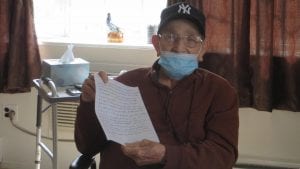 “During these difficult times, the LIM believes in the power of the arts to unite us. The Student/Veteran Pen Pal Project allows for children to connect with veterans who are in need of connection and support while they are socially isolated because of the coronavirus pandemic,” she said.
“During these difficult times, the LIM believes in the power of the arts to unite us. The Student/Veteran Pen Pal Project allows for children to connect with veterans who are in need of connection and support while they are socially isolated because of the coronavirus pandemic,” she said. “The project is a wonderful collaboration between the registrants in the Adult Day Health Care program at the Veterans Home and local community school children,” said Jean Brand, Program Director of Adult Day Health Care at the LISVH. “The heartfelt letters are a fun educational bridge that celebrate the best of who we are as a community. During this time of social distancing the project creates relationships that inspire the human spirit.”
“The project is a wonderful collaboration between the registrants in the Adult Day Health Care program at the Veterans Home and local community school children,” said Jean Brand, Program Director of Adult Day Health Care at the LISVH. “The heartfelt letters are a fun educational bridge that celebrate the best of who we are as a community. During this time of social distancing the project creates relationships that inspire the human spirit.”


